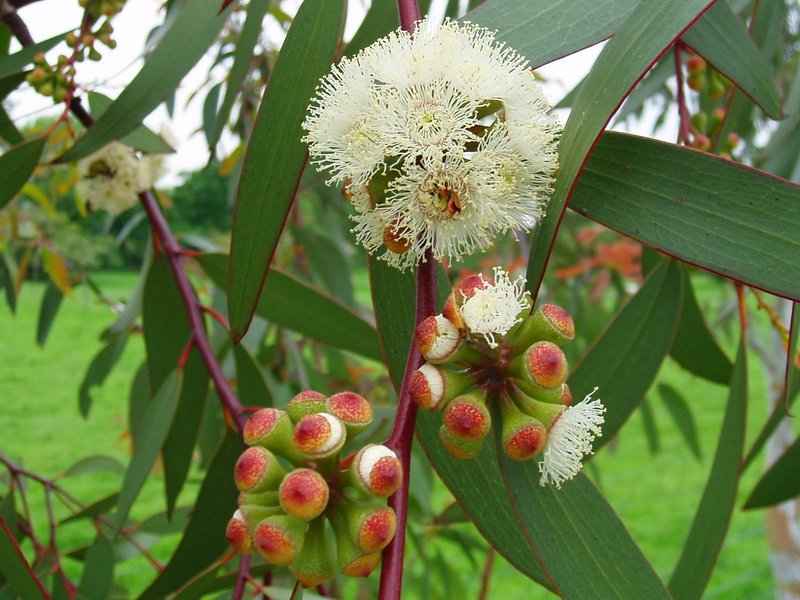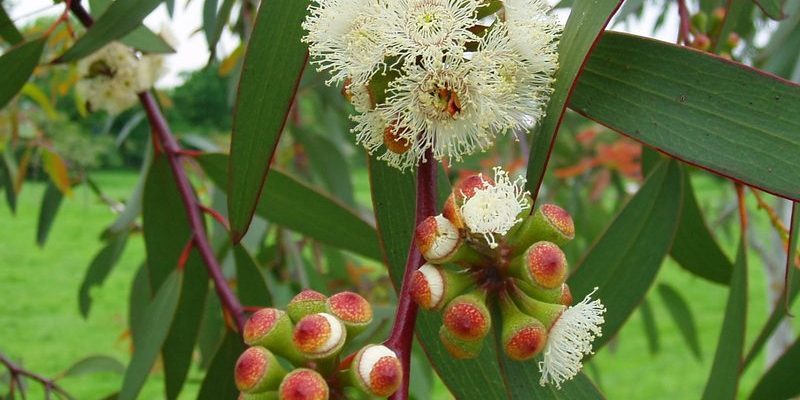
Introduction to the Eucalyptus Longhorned Borer
Imagine a tiny creature, less than an inch long, that can cause significant damage to some of the trees you might see dotting the landscape. That’s exactly what the Eucalyptus Longhorned Borer does. This borer, scientifically known as *Phoracantha semipunctata*, is a type of beetle native to Australia but has made its way to various parts of the world, particularly where eucalyptus trees are found. While they might not be as large or flashy as some pests, their impact on the ecosystem is anything but minimal.
You might be wondering how such a small insect can pose a threat. The answer lies in its lifecycle and feeding habits. The larvae of the Eucalyptus Longhorned Borer tunnel into the wood of eucalyptus trees, causing damage that can lead to tree decline and, in some cases, death. It’s a bit like having termites in your home; they might be out of sight, but their damage can be extensive. Understanding this borer’s behavior, habitat, and impact is crucial for anyone who cares about preserving eucalyptus trees.
Lifecycle of the Eucalyptus Longhorned Borer
The lifecycle of the Eucalyptus Longhorned Borer is a fascinating journey that starts with the adult beetle. Adult females lay eggs on the bark of eucalyptus trees, usually in late spring or early summer. Imagine tiny dots peppering the tree’s bark. Once hatched, the larvae burrow into the tree, creating tunnels as they feed on the wood. It’s like a hidden adventure for these tiny creatures, but a nightmare for the tree.
Typically, the larvae develop through several stages, or instars, before pupating. This stage often lasts several months, depending on the environmental conditions. They prefer warmer climates, so if you live in an area with mild winters, you might see more of these beetles. During this time, the tree is silently suffering, trying to fend off the invaders. You’ll notice the bark beginning to crack, or you might see sawdust-like frass—it’s a sure sign that these little borers are hard at work inside.
Once the larvae mature, they pupate, turning into adults and eventually emerging from the tree to start the cycle anew. It’s important to note that during their time in the tree, the damage they cause can weaken the structure and vitality of the tree. If the problem isn’t managed, it could lead to the tree’s demise, making it essential for us to be aware of this tiny but mighty pest.
Identifying the Eucalyptus Longhorned Borer
Identifying the Eucalyptus Longhorned Borer may not be easy at first glance since they blend in well with their surroundings. The adult beetles are notable for their long, slender bodies—typically around 0.5 to 1 inch long—and their long antennae, which can be even longer than their bodies. Their coloration is often a combination of browns and yellows, allowing them to blend into the bark of eucalyptus trees. When spotting one, look for their characteristic features, like a slightly flattened body and patterns that resemble dots or stripes on their exoskeleton.
However, the more telling signs of an infestation come from the damage the larvae cause. As they tunnel through the wood, you might notice *exit holes* that appear as small round openings on the bark. They often leave behind frass, which looks like wood shavings mixed with excrement. If you’re walking through a grove of eucalyptus trees and see signs of distress, such as wilting leaves or dieback, it might be a strong indicator of an infestation.
It’s crucial to act quickly once you suspect an infestation. Early detection can make all the difference in managing the issue before it becomes a larger problem. Many tree care specialists recommend regular inspections of eucalyptus trees in areas where these borers are known to exist, especially during the warmer months when they’re most active.
Impact on Eucalyptus Trees
The impact of the Eucalyptus Longhorned Borer on eucalyptus trees can be significant. As larvae tunnel through the wood, they disrupt the tree’s ability to transport water and nutrients. Picture a straw that’s bent or full of holes; it can’t do its job effectively anymore. This disruption can lead to weakened trees that are more susceptible to disease and environmental stressors.
Over time, an infestation can result in visible decline, such as yellowing leaves, stunted growth, and even the death of branches. In severe cases, trees can become brittle and unstable, posing a risk not just to the tree’s health but also to the surrounding environment and even human structures. Fallen branches or entire trees can create hazards in residential areas, leading to cleanup costs and potentially damaging property.
In ecosystems where eucalyptus trees play a vital role, the loss of these trees can have a cascading effect on local biodiversity. Birds and other wildlife that rely on eucalyptus for habitat may be forced to relocate or face population declines. This loss of habitat emphasizes the importance of managing and protecting our eucalyptus trees from pests like the Eucalyptus Longhorned Borer.
Management and Prevention Strategies
When it comes to managing the Eucalyptus Longhorned Borer, prevention is key. If you own eucalyptus trees, regular monitoring can help you catch any signs of infestation early. Consider implementing practices like good sanitation around your trees—removing dead or dying branches can reduce breeding grounds for the beetles. It’s a bit like keeping your kitchen clean to avoid attracting pests; the same principle applies here.
Treatment options include insecticides, but it’s essential to use them judiciously. Systemic insecticides can help manage adult beetles and larvae, but only after confirming the presence of the pest. Always follow local guidelines and recommendations when applying any treatment. It’s wise to consult with an arborist who can provide professional advice tailored to your specific situation.
Another effective strategy is to enhance the overall health of your eucalyptus trees. Healthy trees are more resilient and better able to withstand pest attacks. Regular watering, fertilizing, and pruning can keep your trees strong. Think of it as a fitness regimen for your trees—healthy trees are less attractive targets for pests.
Interesting Facts About the Eucalyptus Longhorned Borer
| Scientific Name: | Phoracantha semipunctata |
| Size: | 0.5 – 1 inch long |
| Habitat: | Primarily found in eucalyptus forests |
| Diet: | Wood of eucalyptus trees |
| Life Cycle: | Egg → Larva → Pupa → Adult |
| Active Months: | Spring to early fall |
In conclusion, the Eucalyptus Longhorned Borer is more than just a tiny beetle; it’s a significant player in the health of eucalyptus trees. Understanding its lifecycle, how to identify it, and knowing the potential impact on trees can help you take proactive steps to protect these beautiful plants. The next time you stroll through a grove of eucalyptus, take a moment to look closer, and appreciate the delicate balance of nature. After all, keeping our environment healthy is a shared responsibility, and every little effort counts.
FAQ
What is the Eucalyptus Longhorned Borer?
The Eucalyptus Longhorned Borer is a wood-boring beetle native to Australia that targets eucalyptus trees. It lays its eggs on the bark, and when the larvae hatch, they burrow into the wood, causing significant damage. This beetle can weaken and even kill trees if not managed properly.
Where can I find the Eucalyptus Longhorned Borer?
You can find the Eucalyptus Longhorned Borer in regions where eucalyptus trees grow. While they originated in Australia, they have spread to various parts of the world, especially in areas with warm climates where eucalyptus is prevalent.
How can I tell if my eucalyptus tree is infested?
To check for an infestation, look for signs such as small exit holes in the bark, frass (sawdust-like material), and signs of tree decline like yellowing leaves or dead branches. Regular inspections can help catch infestations early.
What should I do if I find an infestation?
If you suspect an infestation, consider consulting with a local arborist for a professional evaluation. They can recommend appropriate treatments, such as systemic insecticides, and help strategize on preventive measures to protect your trees.
Are Eucalyptus Longhorned Borers harmful to other trees?
While their primary host is eucalyptus, the Eucalyptus Longhorned Borer can occasionally infest other softwood species, but their preference is for eucalyptus trees. Protecting eucalyptus is crucial, as their decline can affect local ecosystems.
How can I prevent an infestation?
Preventing an infestation involves maintaining the health of your trees through proper care, regular monitoring for signs of pests, and removing dead or weakened branches to minimize breeding grounds. Keeping trees healthy makes them less vulnerable to pests.
What is the life cycle of the Eucalyptus Longhorned Borer?
The life cycle of the Eucalyptus Longhorned Borer includes several stages: egg, larva, pupa, and adult. The larvae feed on the tree’s wood, while adults emerge to lay eggs, continuing the cycle.
Can I treat my trees myself?
While there are DIY treatments available, it’s often best to consult with a professional. They can assess the infestation level and recommend safe and effective treatments tailored to your specific situation, ensuring the health of your eucalyptus trees.
Do Eucalyptus Longhorned Borers have natural predators?
Yes, natural predators, such as some parasitic wasps and birds, can help control the population of Eucalyptus Longhorned Borers. However, these natural controls may not be sufficient to manage a significant infestation, making proactive monitoring and care essential.
What are the effects of an infestation on the environment?
In a broader context, an infestation of Eucalyptus Longhorned Borers can negatively impact local ecosystems, especially if eucalyptus trees are a significant component of the area. Loss of these trees can affect wildlife populations that depend on them for habitat and food sources.
How do weather conditions affect the Eucalyptus Longhorned Borer?
Warmer weather conditions tend to favor the activity and reproduction of the Eucalyptus Longhorned Borer, leading to potential increases in infestations. Areas with milder winters may see more pests, highlighting the importance of monitoring and management in those regions.

